- Joined
- Oct 25, 2022
- Messages
- 294
- Points
- 128

 |
As a way to introduce our brass coins to the community, we will raffle off a free coin during the month of August. Follow link ABOVE for instructions for entering. |
 |
 |
The beloved Ships in Scale Magazine is back and charting a new course for 2026! Discover new skills, new techniques, and new inspirations in every issue. NOTE THAT OUR FIRST ISSUE WILL BE JAN/FEB 2026 |
 |


Was Soleil Royal made as good as Royal Louis?Coming back to this thread after a while, still enjoy seeing how you reused the heller part. I went at a model exhibition at ingersheim last week end and could see a finnished wooden soleil royal royal (not scratched tho) and another modellist was scratchbuilding a royal louis and did 2 figurehead, one in gold and theother polychrome. (I got a out of the exhibition with a T90MS 1/35 scale model from zvezda, no missing sprue this time)


Could you post photos of it?It looked good to me.

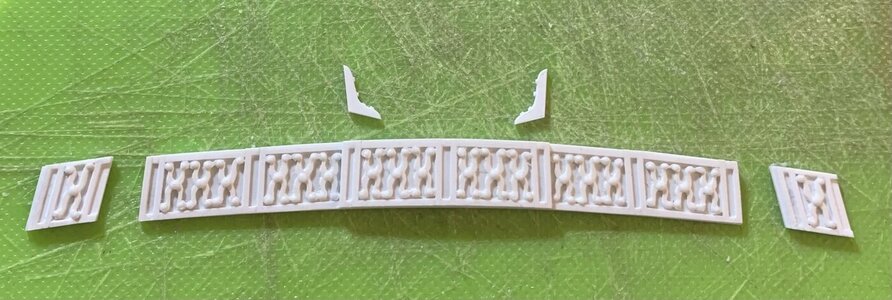
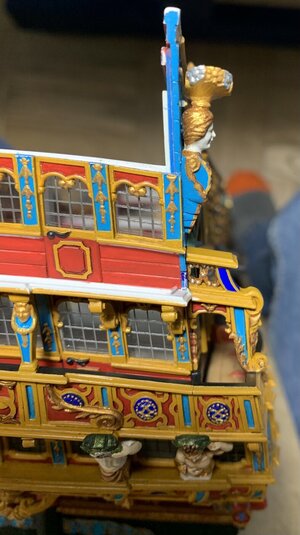
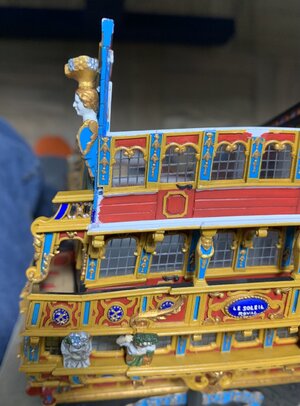
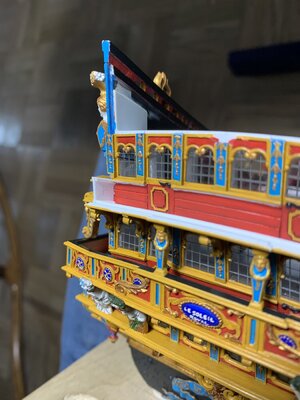
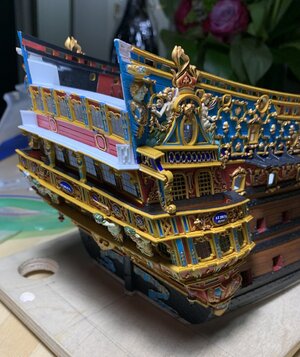
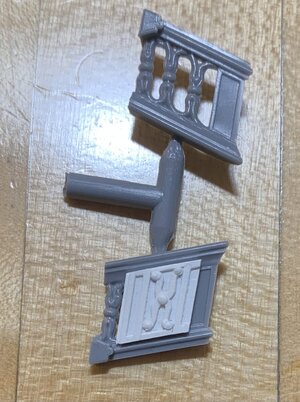
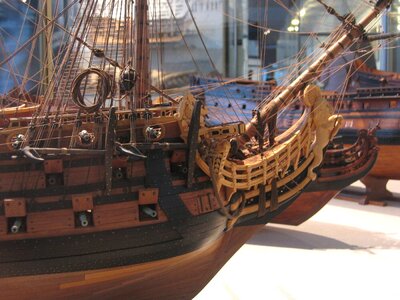
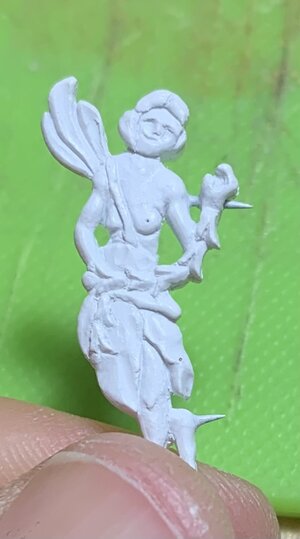
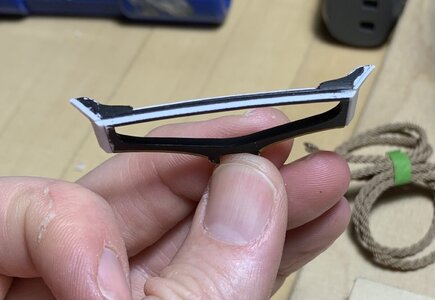
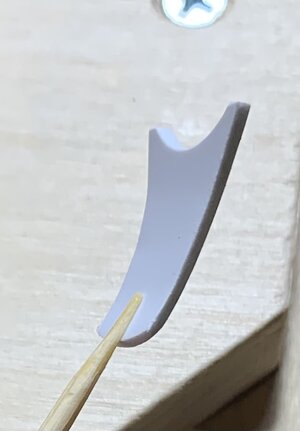
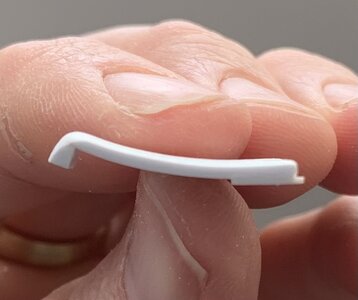
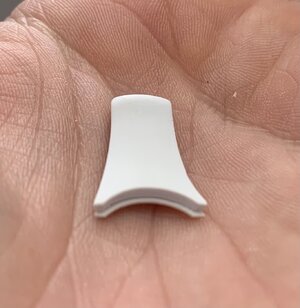
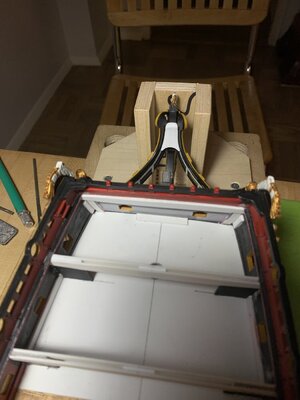
As usual great work Marc,I am less than a week away from our trip to Paris, and then the North East Joint Clubs Meeting is shortly around the corner, once I return. My objective, before the show, was to get the head fully together and re-touched, as well as the upper balcony level. Well, I’m not going to cross that threshold before April 29th.
There were a number of competing priorities, throughout March, and I just couldn’t find the time I needed to make that happen. I say all of this in the event that even one of you had hoped to see the model in New London. I’ve decided not to bring it because these areas at the bow and stern will remain too un-finished looking for display.
These also happen to be particularly challenging areas of the model to bring together. I am satisfied enough with the balcony bulwark parts that I made:
View attachment 367393
Fitting the end pieces to the model required some tricky cutting-in to the outside window pilasters. You can see that the sill moulding for the window tier extends fully to the ship’s sides:
The rebate has to accommodate both the end piece and the 1/16” caprail that I have yet to make:
View attachment 367395
View attachment 367389
View attachment 367388
View attachment 367386
It’s a slow and winding business that necessitates painting in stages. One thing that was a little surprising to me is that the fore and aft depth of my middle and upper balconies is significantly more shallow than the stock kit:
View attachment 367383
Thinking about my process, I realized that I had made a design decision, earlier, when I was figuring out the middle balcony; I realized there would be limits to the degree to which I could bend the posture of the Four Seasons figures, so that they could stretch from the now “false” lower balcony to support the projection of the middle balcony. By necessity, then, the middle balcony determined the depth of the upper balcony. Proportionally, I am not displeased by the more shallow depth.
One failed experiment had to do with the bow angels that seat just behind the headrails. I used a combination of C/A and liquid plastic cement to secure the headrails. Before glue, though, I had dry-clamped each headrail in-place for several days, in order to better induce the shapes and relieve unwanted stress on the subsequent glue joint.
Now, bear in-mind that I am fully aware these headrails should be flat. The design of the kit figurehead, in combination with my widening of the bow, does not allow for any reasonable projection of the aft escutcheon of each headrail. The gap you see on Frolich’s model, below, would have been more than double on mine:
View attachment 367394
photo, courtesy of Marc Yeu
With such a distracting projection away form the forecastle bulwarks, these escutcheons would have looked like jug ears. In consideration of that, I decided it was better to perpetuate the in-accuracy of the stock headrails, which are also rounded to seat up close to the hull.
In an attempt to distribute any remaining stresses across a broader glue surface, I thought I could literally pin those escutcheon ears down with the bow angel carvings:
View attachment 367392
Unfortunately, one must drill for these pins at the precise depth and angle. This proved quite difficult to do with the headrails already in-place, and the result of my attempt was that the carving did not lay flat against the ship’s side. Forcing it to do so would have, in fact, introduced additional lever strain on the headrail glue joint. Consequently, I ground the pins away, filled the holes and simply glued the bow angels in-place. I’ll post pictures of all of that once the re-touching is complete.
The other surprising thing to me was just how much shimming was necessary for the other remaining headrail supports, now that both headrails were fixed in-place. In hindsight, it would have been much wiser to pattern these supports after the headrails had been installed. Instead, I had attempted to dry-fit them one side at a time. Using this approach, though, I could only eyeball the centerline, and only poorly at that! Just look at all the plastic I’ve added back to these parts:
View attachment 367387
Finally, though, I can do the necessary touch-ups and glue these in-place.
One part that could only be made once the headrails were installed was the forward terminus of the headrail grating. In the stock kit, Heller provides a mostly flat headrail grating, the forward end of which rests on a small ledge just behind the figurehead.
As an upgrade, I want to create a new headrail grating that is both cambered, athwartships, and that follows the upward sweeping arc of the headrails. This is a tricky piece to make and fit.
I seem to have lost the picture of the cardboard template I had made to start this part, but I transferred that pattern to a piece of 1/16” styrene. In my first attempt, I tried to muscle a bend into the part, but it snapped. On the second attempt, I used an open candle flame to soften the plastic so that I could easily induce this curve:
View attachment 367385
There was some melty distortion, at the edges, that was removed during the fitting and shaping process. As I had with the pattern, I temporarily CA’d a handle to the part for ease of fitting in this tight area. Once I had a perfect fit, I glued a piece of 1/8” square stock to the forward end so that I could shape a neat bullnose that transitions into the knee of the head:
View attachment 367381
You can also see the thinner stock that I glued to the aft end, on the under side, to create a ledge for the grating slats. To finish off the piece, I filed a gentle camber into the top surface of the part, which is now ready for paint and installation:
View attachment 367382
View attachment 367384
And so, it is a lot of fiddling around to make this imperfect geometry coalesce into something that looks purposeful and a reasonable facsimile of a ship’s head structure.
If I were starting this whole project all over again, one thing I would definitely do would be to fabricate a continuation of the middle battery planking past the beakhead bulkhead, in a downward tapering arc towards the stem. By the time I realized this was actually a feature of French practice, it was too late to incorporate the detail.
Thank you for the likes, comments and for looking-in. When I next return later in May, I will have some nice finished pictures of the head. Until then, be well!
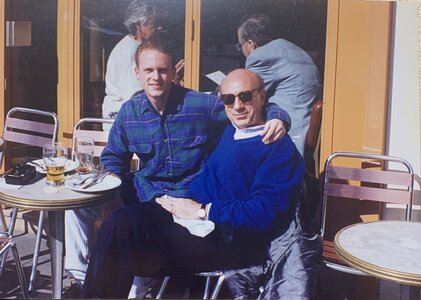
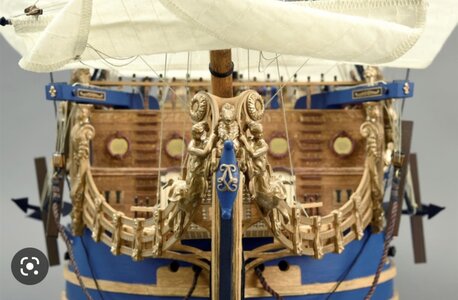
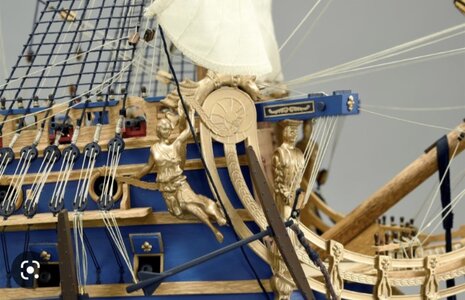
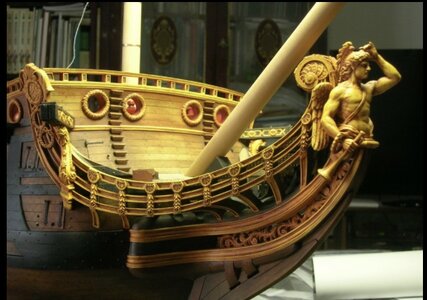
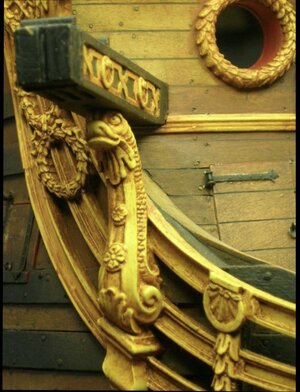
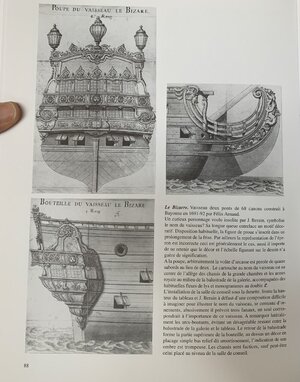
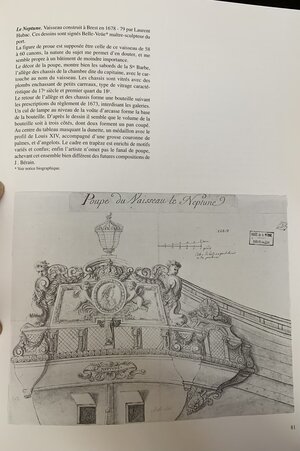
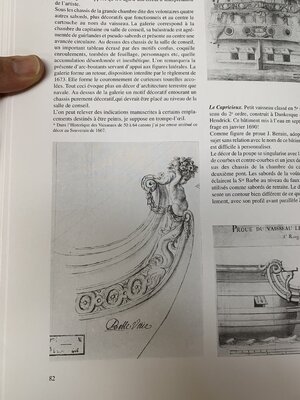
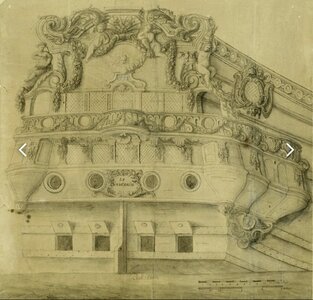
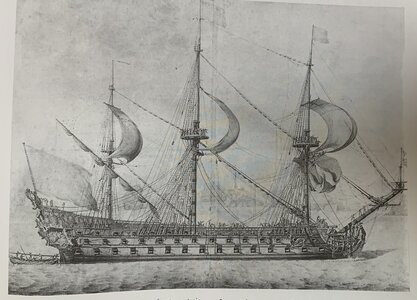
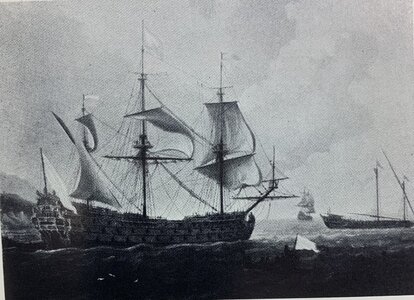
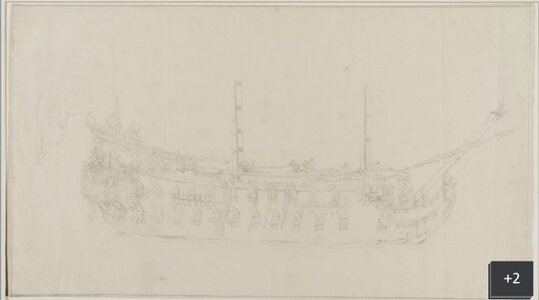
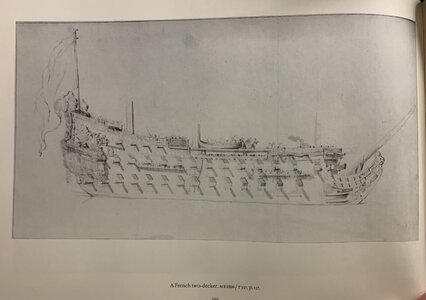
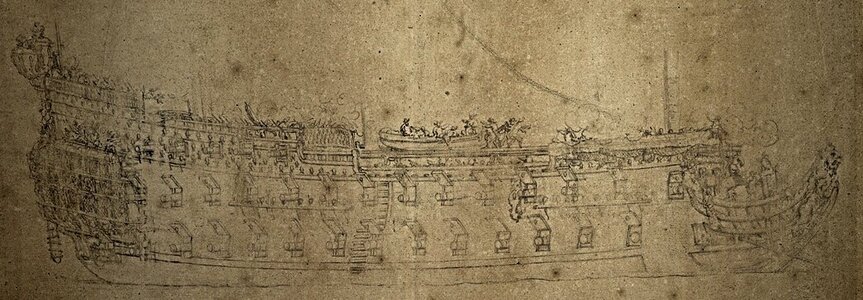

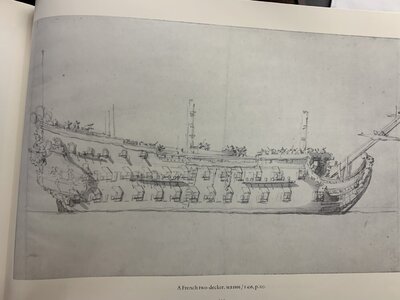
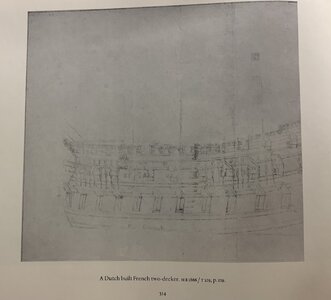
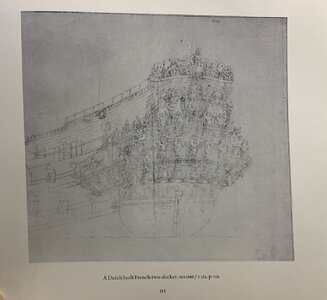
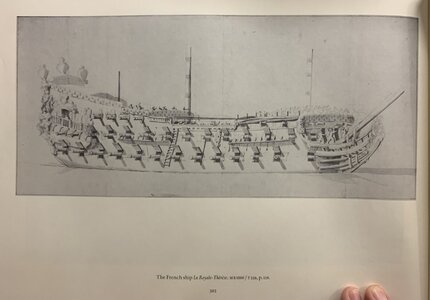
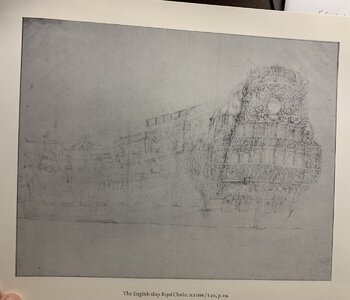
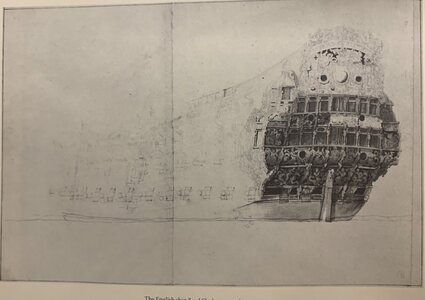

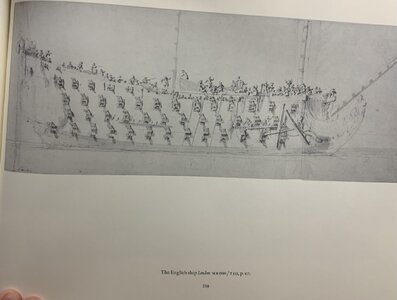
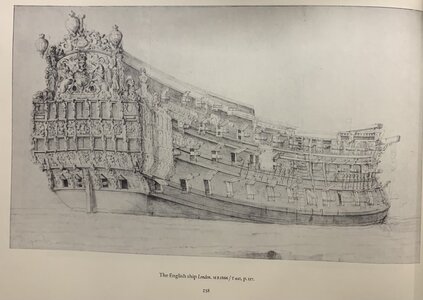
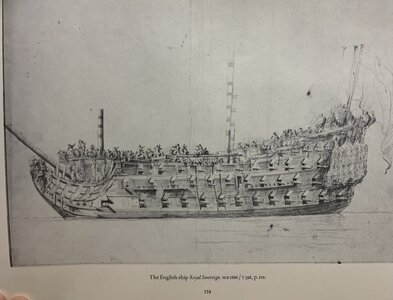
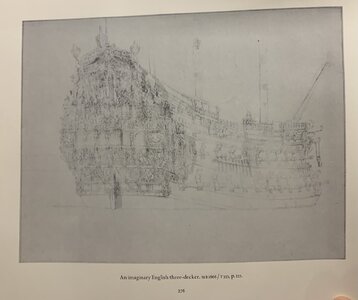
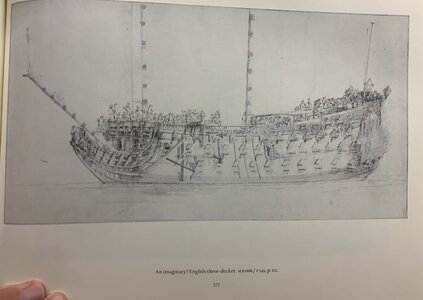
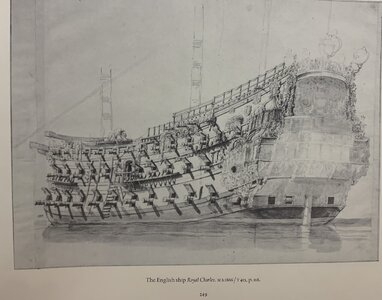
Thank you for sharing Marc.My visit to the INHA, National Library of France was interesting, if not as directly productive as I had hoped.
One thing that I was able to request and look at in the fantastic oval reading room was Le Chevalier de Tourville, the Boudriot monograph of the proposed 1680 First-Rate L’Ambiteaux. It is an impressively documented project and a beautifully hand-drawn monograph. The plans, in 1:48, give a strong impression of just how large a model one can produce from this set. Even at 1:72, one needs a slipway to launch such a behemoth.
There were a few new plates of interest in the monograph that I hadn’t seen before:
View attachment 369266
View attachment 369269
View attachment 369267
Belle Viue is the same Brest sculptor and draftsman responsible for the following drawing of the highly fascinating Souverain of 1678:
View attachment 369275
As an added bonus, the following is the best and clearest image I have yet seen of the RL of 1692:
View attachment 369268
While I was really only skimming the monograph, in the interest of limited time (I had a 3 hour window that I stretched to 4), I will say that I was fascinated by Boudriot’s skepticism of the VdV drawings of La Reyne, with specific regard to the sheer and placement of the artillery. Perhaps this is my personal failing in that I imbue the work of the VdV’s with a degree of photo-realism only paralleled by Puget for these times. All I can say for sure is that I am no expert.
My primary objective for this visit was to see whether there were any catalogued references to the “Gilded Ghost” portrait:
View attachment 369281
Unfortunately, an image search produced no direct result. Upon walking amongst the stacks, I realized that I happened to be in a room divided between artists both pre and post 1845. And so, I did what I usually do when I visit the STRAND bookstore in NYC; I went in search of my coterie of famous French artists, sculptors and Dutch Master marine artists.
And so, I skimmed through the six books in the stacks for Charles LeBrun, the four for Antoine Coysevox, the six for Puget. There was nothing in the stacks for Van Beecq. Regrettably, I did not think to look for Francois Girardon.
Only the works on Puget made any specific pictorial reference to his work at the arsenal at Toulon; not much there that I hadn’t seen before. But, then I found the three volume Robinson set on the Van de Veldes. Again, if I had more time, I could probably have pulled more, but following are a number of fascinating portraits that help clarify things I couldn’t see clearly before.
For example, this whisper of a portrait:
View attachment 369285
Appears to have very much in-common with this portrait:
View attachment 369249
They do not appear to be the same vessel, but perhaps the same type of Second-Rate - that of the “interrupted” third deck (an un-armed and open waist). Other corollaries:
View attachment 369293
I have never seen the following two before:
View attachment 369249
The boutielle, below seems out of proportion, but it is nonetheless fascinating:
View attachment 369250
Here is one of the early Holland-built ships of the 1660’s:
View attachment 369246
View attachment 369245
Fantastic detail!
A different perspective and fascinating study of La Royal Therese:
View attachment 369257
And then, of course, there were quite a number of fascinating studies of famous English ships. SR’s early rival, the Royal Charles:
View attachment 369261
View attachment 369262
View attachment 369261
The London:
View attachment 369264
View attachment 369265
A particularly interesting re-fit of the Royal Sovereign:
View attachment 369260
And, a perhaps conjectural ship:
View attachment 369259
View attachment 369258
At least I can say there may be sound artistic precedent for pulling a ship out of thin air!
All interesting to me, and so the journey through Paris and maritime history continues! Dad is having a great time, despite the expected travel exhaustion of his 88 years.
More to follow, and thank you for looking-in.
View attachment 369263
Funny thing is that I was getting conflicting reports as to whether the Musee was actually open or not. One particularly helpful person at the INHA assured me that it was, but she was actually referring to the Hotel de la Marine at Place de la Concorde. I had a free moment so I walked to Palais de Chaillot. Unfortunately, it is definitively closed until October 2023. I felt better for checking with my own eyes; I would have been so mad to have discovered, after the fact, that it was actually open, or partially open. I certainly would have loved to see Frolich’s model in person. l would even go so far as to say more-so than Tanneron’s SR, which is so thoroughly documented.It is a shame you didn't get the answers you wanted but I hope you enjoyed you stay in Paris none the less.
Is Frolich's model of L'Ambiteux on display in the museum?
Kind regards
Nigel
Funny thing is that I was getting conflicting reports as to whether the Musee was actually open or not. One particularly helpful person at the INHA assured me that it was, but she was actually referring to the Hotel de la Marine at Place de la Concorde. I had a free moment so I walked to Palais de Chaillot. Unfortunately, it is definitively closed until October 2023. I felt better for checking with my own eyes; I would have been so mad to have discovered, after the fact, that it was actually open, or partially open. I certainly would have loved to see Frolich’s model in person. l would even go so far as to say more-so than Tanneron’s SR, which is so thoroughly documented.
In any case, I have a letter writing campaign ahead of me to see what I might learn from the other Musee arsenal locations, as well as the museum at Tatihou.
..... But, then I found the three volume Robinson set on the Van de Veldes. Again, if I had more time, I could probably have pulled more, but following are a number of fascinating portraits that help clarify things I couldn’t see clearly before.
